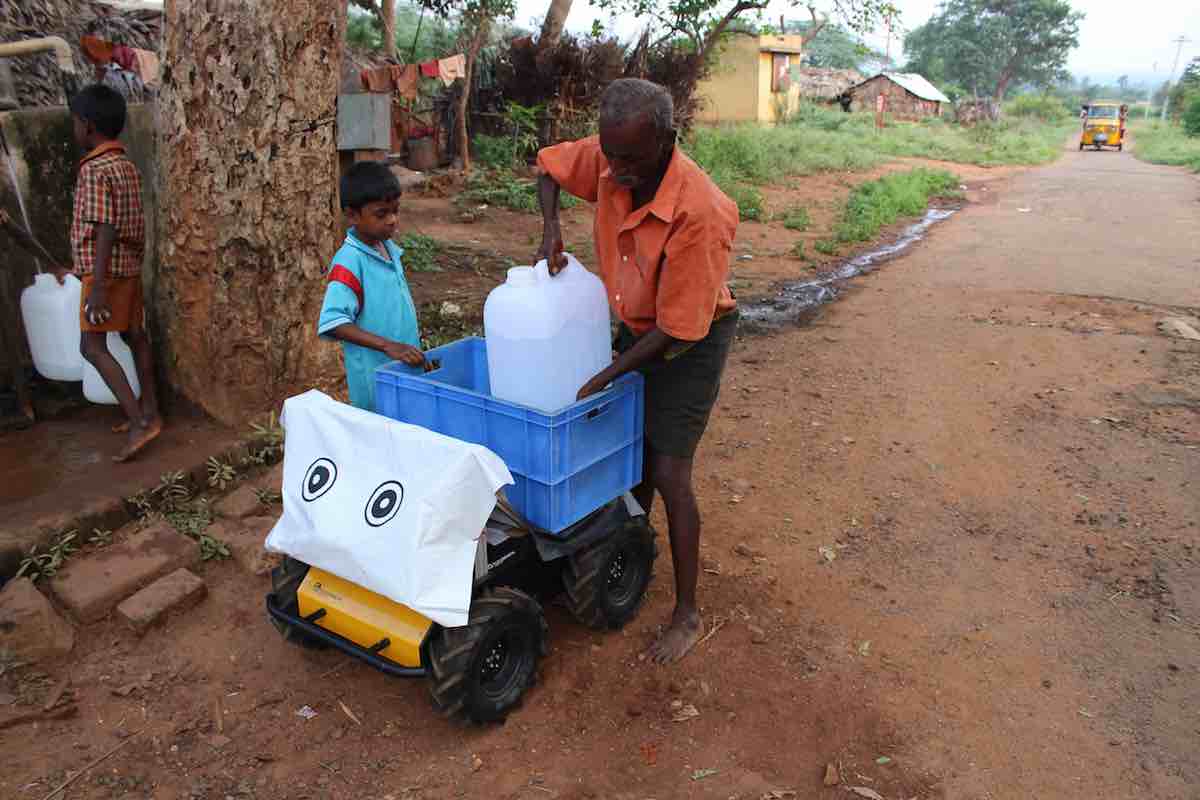Most pictures of rural villages seen are with women and children carrying water on their heads from streams. In an attempt to change the storyline, a rural water carrying robot has been designed to help in carrying and transporting the water from the source to various homes in rural villages.

The invention which was done by researchers from universities in the UK and India was inspired by the challenges faced by women and children in Indian communities who have to walk long distances to get water from community wells to their various homes.
Funded by the Scottish Informatics and Computer Science Alliance and Amrita University, the robot also aims to see the way remote rural populations would view robots, according to a research associate in the school of computing science at Glasgow University, Dr. Amol Deshmukh.
Husky the Robot as the rural water carrying robot is known, is an unmanned ground vehicle (UGV) that is able to carry as much as three 20-liter bottles of water at and deliver to where one needs it. What makes it even more interesting is that it is easily controlled using a remote.
It was first put to test in a rural part of southern India, Ayyampathy where it has helped in making the lives of the people, most especially women and children whose duty it is in the area to fetch water.
The robot functions easily by asking to be loaded and directed to where one wants it to take the water to. Once there, it will remind the people to wash their hands once they get home.
Just as it is with other technology, the male-sounding robot does not come without its good and bad side.
The Good About the Rural Water Carrying Robot
The good part of this technology is that it is designed to make life much easier for people in the rural communities. This is because women and children get to carry water over long distances on their heads.
See Also: Steven Udotong: 16 years old Nigerian Could Become First Black Student To Build a Nuclear Fusor
Another important thing with the invention is that it has brought the possibility of further designing robots that would help rural communities. This is because most robots are now only designed with the urban communities in mind.
What has made the invention very significant is the fact that it seeks to take care of one of the most pressing problems for the people of India where more than half have been said to have no access to tap water.
The Bad
While it may be a well-thought technology, this robot rides on wheels and the thing is that most rural communities do not have good roads. In fact, the roads are mostly rocky which will make it hard for the technology to really serve. The plus here, though is that the wheels are large and seem to have the capability to navigate through rough terrains, even as it may not be very easy.
The Ugly
For any technology designed for people in the rural communities, one of the main things to remember is that these are mostly people living in poverty. As such, this robot loses its appeal for the people in rural communities because it is designed to sell for around £25,000. With that amount, some communities can get a decent borehole drilled for them.
In fact, even if governments are willing to obtain the robots for people, it will still be a misplaced priority since with the amount they can find a way of bringing water closer to the people.
See Also: 9 Ways Nigerian Government Can Support The Growth Of Technology
Moreover, there is also the problem of electricity that is needed to have the robot powered to work efficiently.
Finally, it is important to note that there is a possibility in the long run to have the rural water carrying robot to be very affordable and make use of solar power. In such a scenario, it will serve most effectively for the rural societies.















